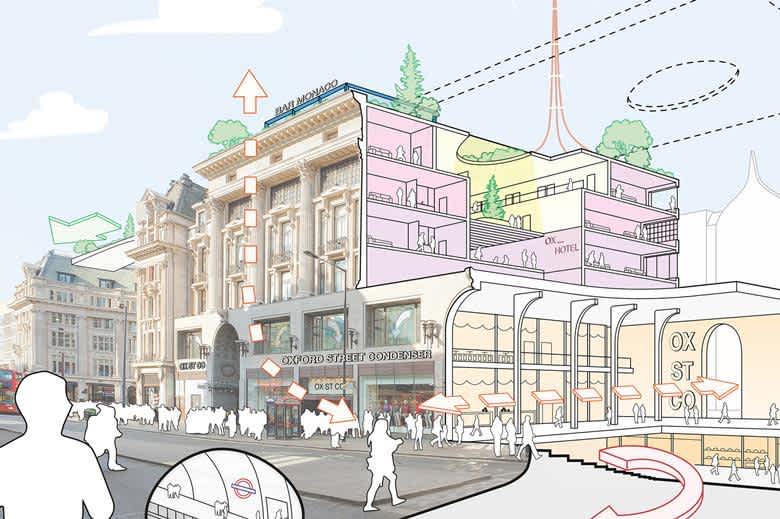Shared space needs a shake up, but is not dead, after Covid-19
How can we continue to ‘sweat’ space in cities while mitigating the spread of infectious disease? In cities worldwide, we are seeing increasingly efficient use of finite spaces by mixing up uses: a site that functions as a school during the week opens at weekends as a leisure centre, and in summer for adult education, for example. Or, the space on the ground floor of an office building is used for social gatherings, team brainstorms and hosting cultural events. Spaces that are used for more than one purpose are what we call ‘busy space’.
Covid-19 means we need to rethink shared space, however our need for taking best advantage of limited space in cities has not disappeared. How do we continue to ‘sweat’ space while mitigating the spread of infectious disease?
As people live longer and seek to remain metropolitan, so the population of cities continues to rise, with the world on course to have 43 megacities by 2030. Most cities have policies that endeavour to limit urban sprawl, so they are becoming increasingly dense. The increasing concentration of the world’s population within urban areas is creating crises of affordability and the development of diverse housing solutions in response.
Meanwhile, space and planning standards which have been imposed to protect the consumer have limited the ability to provide creative spatial responses. Until planning changes there is finite deliverable area available, in terms of both area and height, without expanding the footprint of the city.
The solution is to take best advantage of the increasing limited amount of space we have. Since the pandemic started, in the UK we have seen fantastic examples of this: BDP’s rapid conversion of the ExCeL Centre’s into NHS Nightingale, hotels that have been used for homeless shelters and to accommodate healthcare workers.
The ultimate busy space during lockdown has for many of us been the home. No longer is the urban home a place used at the evenings and weekends, as homes have accommodated work, homeschooling and leisure in all under one roof. With planning standards as they are, we need to make better use of the limited space we have for urban homes.
We will see a resurgence of an architecture more aligned with Modernism, with its clean lines and hygienic-looking white plainsJonathan Clarke, AFK
Proper facilities for homeworking will need to be assembled during the day and rolled away in the evening. Parcel and delivery spaces will need to allow for the new surge of online shopping and accommodate chilling for groceries. Recycling will need to cope with the added wine bottles and for stripping down your deliveries on receipt. Bike spaces, lifting provision and corridor widths should increase. In the rental market, we will need to consider amenities so they cannot be used as a bargaining chip for rent reduction upon temporary closure.
The more flexible the spaces we design, the better they can be used, or converted, for multiple purposes. New materials and cleaning regimes will allow for the turnaround of spaces and for gaining back some of our density. But we will also see a resurgence of an architecture more aligned with Modernism, with its clean lines, hygienic-looking white plains and fresh air.
Busy space, then, rather than being over, is more vital than ever, and it is the responsibility of us architects to make it work. As architects and designers we are increasingly caught up in solving problems that have historically sat with clients and patrons in an effort to secure commissions in challenging business environments. However, by focusing on our core skill set – dealing with space – we can meaningfully assist in solving the issues of density and affordability, which have become even more acute as we prepare for the post-Covid era.
An original copy of this article appeared in the Architects' Journal and can be read in full here
